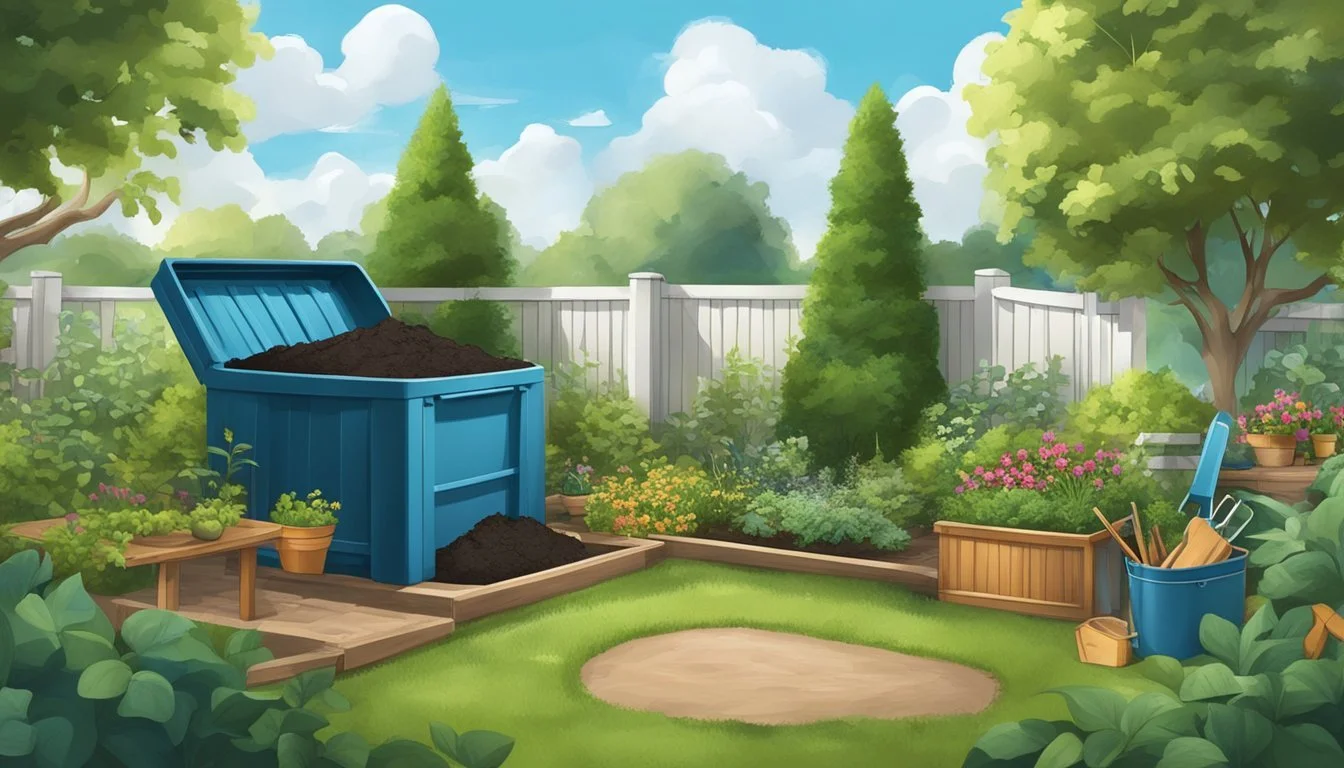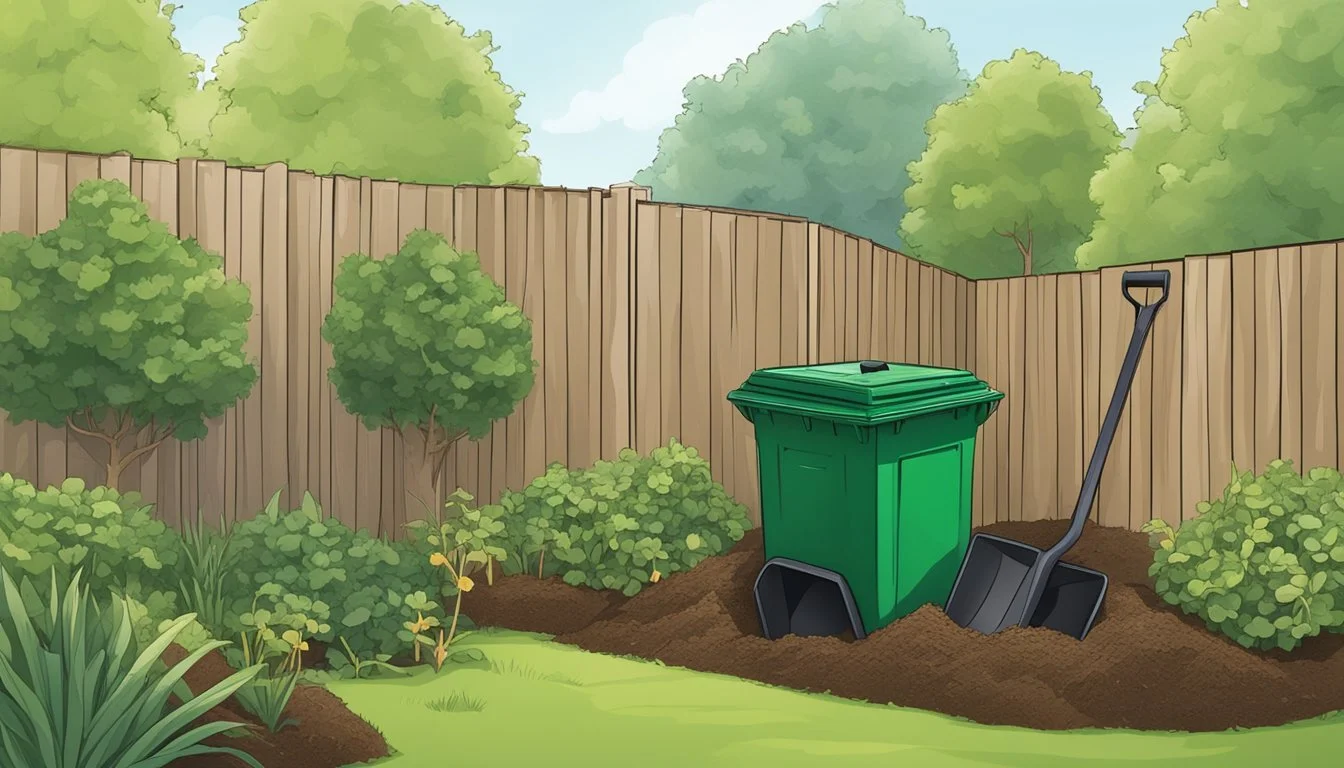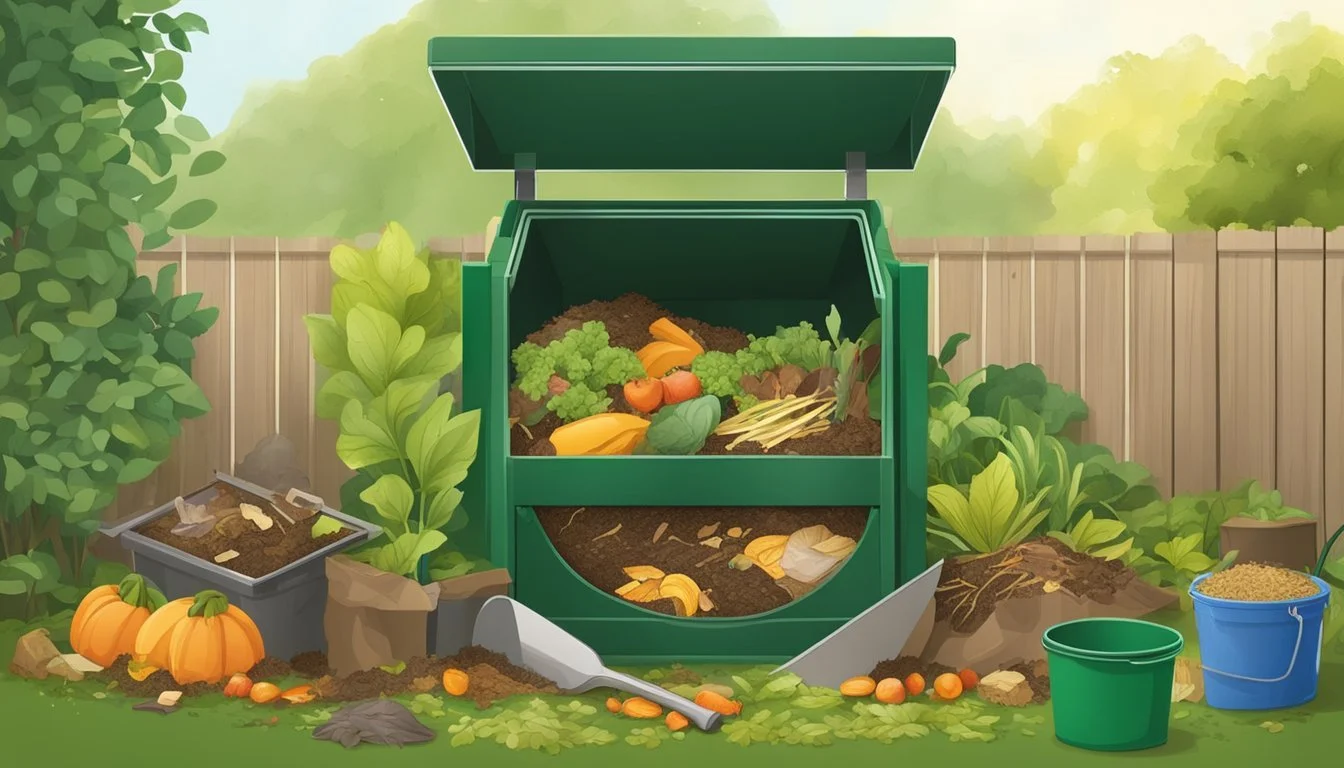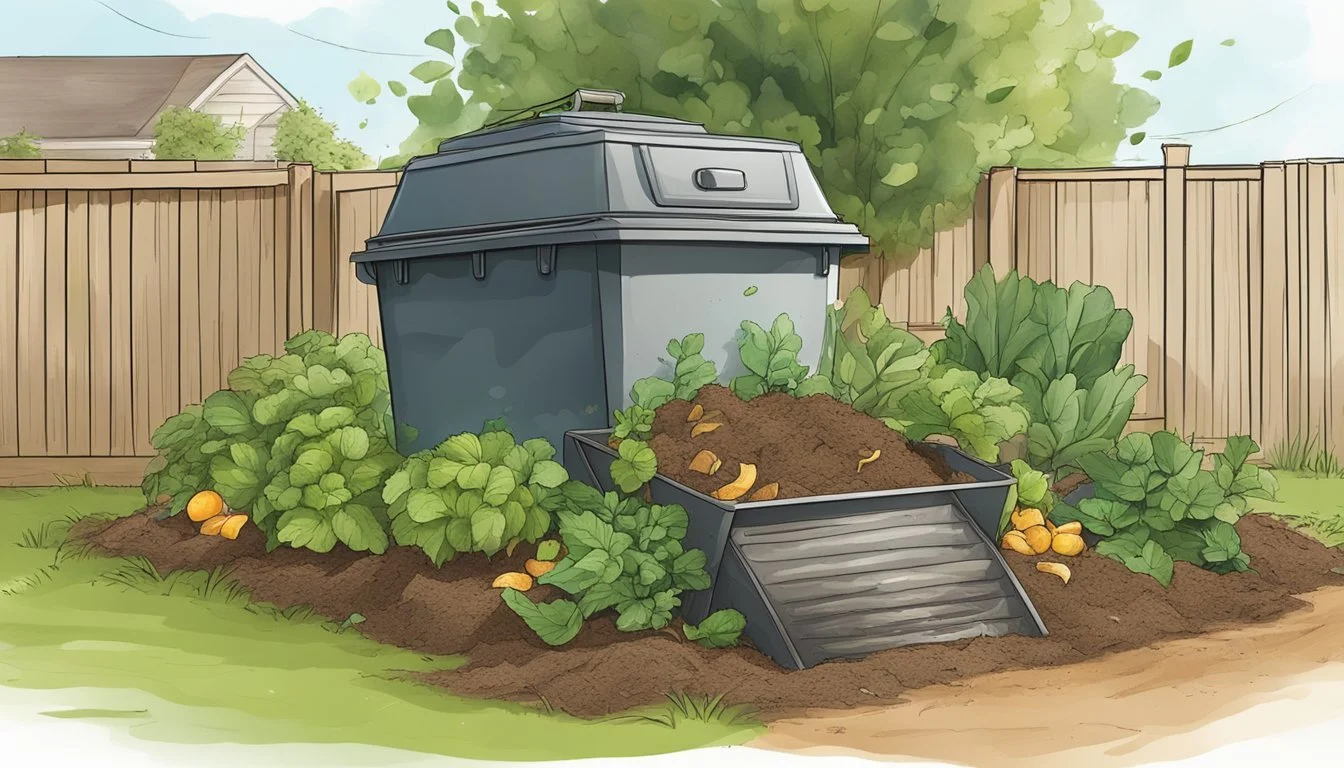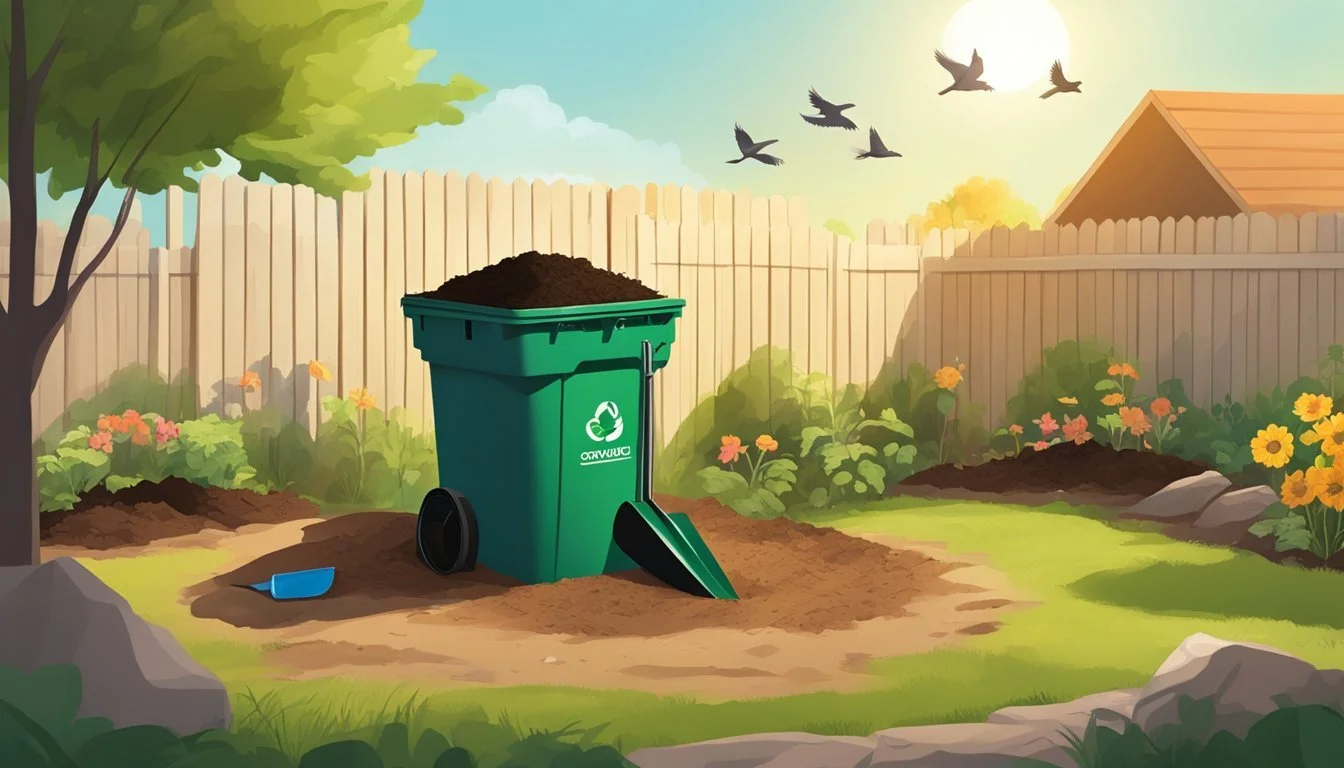Guide to Composting in Broken Arrow, OK
Essential Tips for Sustainable Waste Management
Composting in Broken Arrow, Oklahoma, presents an opportunity for residents to engage in sustainable waste management practices. This environmentally friendly process involves collecting organic matter, like plant material and food scraps, to foster natural decomposition aided by microbial activity. The City of Broken Arrow encourages individuals and families to learn and participate in composting to reduce landfill waste and create nutrient-rich soil for gardening. Whether performed in backyards, community gardens, or even indoors, composting has significant environmental benefits, including reducing greenhouse gas emissions and enriching local soil without the need for chemical fertilizers.
In Broken Arrow, residents have access to resources and guidelines to start and maintain an effective composting system. Through the City of Broken Arrow's sustainability resources, individuals can find valuable information on backyard composting guides and how to partake in rebate guidelines that incentivize greener living. For those seeking a more in-depth understanding, Oklahoma State University - OSU Extension provides a step-by-step process on how to construct and manage compost bins of various sizes using various materials easily found at home or in local stores.
Supportive of both novice and experienced composters, the community prioritizes accessibility to composting. It targets to achieve long-term sustainability goals while also educating its citizens on the impact and importance of individual actions towards a collective environmental effort. As organic waste is turned into valuable compost, it becomes clear that through community engagement and individual responsibility, positive environmental change is possible within Broken Arrow.
Composting Basics
Composting is the process of recycling organic waste into a valuable soil amendment, enriching gardens and landscapes in Broken Arrow, OK. It turns materials like leaves and kitchen scraps into a rich organic matter, full of nutrients that improve soil health.
Benefits of Composting
Composting offers numerous advantages to the garden ecosystem. The practice transforms yard waste and organic kitchen scraps into compost, which serves as a potent soil amendment. This conversion boosts soil fertility by introducing essential nutrients and improving soil structure. Compost enhances the soil's ability to retain water and air, fostering stronger plant growth. Additionally, composting reduces reliance on chemical fertilizers and diminishes methane emissions from landfills.
Composting Essentials
To establish a successful composting operation, one must maintain a proper balance of green and brown materials, air, and water. Organic materials undergo decomposition when microorganisms break them down, synthesizing a nutrient-rich compost. Ensuring adequate air circulation is crucial, as it supports the aerobic bacteria responsible for breaking down the waste. The compost should also be kept moist, as water is vital for the composting process, yet excess moisture should be avoided to prevent anaerobic conditions.
Green and Brown Materials
In the composting palette, 'Green materials' are nitrogen-rich substances such as grass clippings, fruit scraps, and vegetable peels, which add nitrogen to the compost. They are the building blocks of protein and help fuel the composting organisms. 'Brown materials', such as dry leaves, branches, and cardboard, provide carbon, which gives energy to these microorganisms. A proper ratio of green to brown materials is essential for effective composting. A general guideline is to maintain a balance of roughly one-third green to two-thirds brown materials to create an optimal environment for decomposition and to produce a well-balanced compost.
Setting Up Your Compost Area
In Broken Arrow, OK, successful composting starts with setting up the right environment that balances greens, browns, air, and moisture for organic decay. Careful planning ensures the efficient transformation of yard waste into nourishing compost.
Choosing the Right Location
Selecting an optimal spot for your composting endeavors involves finding a dry, shady area close to a water source. It's ideal to position the compost pile or bin away from direct sunlight which may dry out the pile too quickly, and yet within reach of a hose to maintain necessary moisture levels. Furthermore, it should be situated on bare soil rather than concrete or asphalt to enhance aeration and facilitate the presence of composting-friendly organisms.
Types of Compost Bins
Compost bins can be purchased or homemade, depending on personal preference and available materials. Options range from simple plastic containers to sophisticated rotating barrels. For budget-conscious gardeners, making use of materials such as wooden pallets or wire is a feasible solution. You may also choose to eschew a bin altogether, creating a compost pile directly on the ground, though bins help in keeping the compost contained and can accelerate the process.
Building Your Compost Pile
When building your compost pile, adhere to the essential ratio of 1 part green to 2 parts brown materials. Greens are organic materials rich in nitrogen such as fruit and vegetable scraps, grass clippings, and coffee grounds, while browns are carbon-rich and consist of materials like dry leaves, twigs, and paper. Layers should be alternated to facilitate proper breakdown. Regularly turning the pile introduces the necessary air to speed up the composting process. Keeping the pile moist but not wet is key; the consistency should feel like a wrung-out sponge.
Composting Methodologies
In Broken Arrow, Oklahoma, residents have various methods at their disposal for transforming organic waste into valuable compost. Each technique caters to different types of waste and requires specific conditions to flourish.
Traditional Composting
Traditional composting is an effective way to recycle kitchen scraps and yard waste into nutritious soil amendments. It requires a balance of green (nitrogen-rich) and brown (carbon-rich) materials to promote proper decomposition. Oklahoma State University - OSU Extension's insights emphasize the importance of maintaining the moisture of a damp sponge and incorporating air holes to accelerate the process. This method typically involves a compost bin or pile and can take a few months to produce finished compost, which serves as a potent mulch or addition to garden beds.
Vermicomposting
Vermicomposting introduces worms into the equation, converting organic matter into worm castings, a high-nutrient form of compost. It's particularly suitable for indoor composting or when limited space is an issue. Red worms are the preferred species, and they require a special type of compost bin, which facilitates the breakdown of kitchen scraps into compost. The Old Farmer's Almanac advises enthusiasts to manage bin conditions to accommodate the needs of the worms, ensuring the production of quality finished compost.
Grasscycling
Grasscycling is a straightforward and environmentally friendly practice where grass clippings are left on the lawn after mowing. This method not only provides a natural mulch that conserves moisture but also reduces the need for chemical fertilizers. According to the Oklahoma Recycling Association, the technique recycles nutrients directly back into the soil, promoting healthier lawn growth. Clippings decompose rapidly and should be spread thinly to avoid clumping, which ensures they do not smother the grass beneath.
Maintaining Your Compost
Maintaining a compost pile effectively in Broken Arrow, OK involves a careful balance of materials and conditions to optimize the decomposition process. Key to this is managing green and brown material ratios, ensuring proper aeration and moisture, and addressing any issues that arise promptly.
Balancing Green and Brown Ratios
The ideal compost pile consists of a balanced mix of green and brown materials. Greens are nitrogen-rich substances like vegetable scraps or grass cuttings, while browns provide carbon and include materials like dry leaves or cardboard. Aim for a ratio of browns to greens approximately 3:1 by volume for a healthy, odor-free decomposition.
Proper Aeration and Moisture
Compost requires oxygen for aerobic bacteria to thrive and break down organic material. Turning the pile regularly will infuse it with air and aid in maintaining an even temperature throughout. The compost should also stay as moist as a wrung-out sponge. If it is too dry, water should be added; if too wet, more dry brown materials can help restore balance.
Troubleshooting Common Issues
There might be times when the compost pile emits a strong odor or attracts pests, indicating an imbalance. An ammonia smell suggests too much nitrogen; thus, more carbon-rich browns are necessary. If the pile isn't heating up, it might need more nitrogen-rich greens or better aeration and moisture. By regularly monitoring the pile and making adjustments, these common issues can be mitigated, maintaining the integrity of the compost process.
Using Your Compost
Upon completion of the composting process, you obtain finished compost, a rich amendment that benefits both your garden and lawn. Integral to sustainable waste management, using compost reduces landfill contribution and revitalizes the fertile ground.
Harvesting Finished Compost
To harvest finished compost, one should wait until it resembles dark, crumbly topsoil with a pleasant, earthy odor. This indicates that the compost is mature and ready to use. It can typically be found at the bottom of your compost pile or bin. Pass it through a screen to remove any large, un-decomposed material and return it to your composting system to continue breaking down.
Applying Compost to Gardens and Lawns
When applying compost to gardens, it should be incorporated into the topsoil to provide nutrients that are essential for plant growth. Mix it into the soil before planting, or use it as a top dressing for existing plants. For lawns, a half-inch layer of fine compost can be raked gently into the grass as a natural fertilizer, promoting healthy turf. Remember that compost not only enriches the soil but also improves its structure and water-holding capacity.
Dos and Don'ts of Composting
In the pursuit of a greener environment in Broken Arrow, OK, composting presents an effective way to manage organic waste. The key is knowing what items will enhance the compost pile and which may be detrimental.
Materials to Include
Include the following in your compost pile:
Food scraps: Fruit and vegetable remnants should form the bulk of your compost.
Coffee grounds and tea leaves: These are excellent nitrogen sources.
Eggshells: Crushed eggshells provide valuable minerals.
Paper products: Uncoated paper, like newspapers and cardboard, can be added in moderation.
Keep a balance between "greens" such as food scraps that provide nitrogen, and "browns" like dry leaves and paper products that supply carbon.
Category Examples Greens (Nitrogen) Food scraps, coffee grounds, tea leaves Browns (Carbon) Eggshells, paper products, dry leaves
Items to Avoid
Do not put these items in your compost bin:
Meat, bones, and dairy: These create odor problems and attract pests.
Grease and oil: They can cause spoilage and are difficult to break down.
Diseased plants: They may transfer diseases back to other plants when used.
Remember that a successful compost requires proper air circulation, moisture, and a balance between green and brown materials to decompose efficiently without attracting pests or creating unpleasant smells.
Environmental Impact
Composting in Broken Arrow represents a significant opportunity to mitigate ecological pressures. By redirecting organic matter to compost rather than landfills, the city can reinforce its commitment to sustainability and benefit from improved soil and plant health.
Reducing Landfill Waste
When residents compost, they divert food scraps, yard trimmings, and other biodegradable materials from landfills. This process plays a critical role in reducing methane emissions — a potent greenhouse gas released when organic matter decomposes anaerobically in landfills. The City of Broken Arrow acknowledges the importance of educating citizens on sustainable practices, which include effective composting habits.
Methane Reduction: Composting helps cut methane emissions from landfills.
Volume of Waste: It is reported that a significant portion of what ends up in landfills is actually compostable organic matter.
Enhancing Soil Health and Ecology
Compost acts as a powerful soil amendment, enriching the soil with vital nutrients and improving its physical structure. Enhanced soil fosters robust vegetation and can be a form of erosion control, stabilizing the soil and preventing runoff. Additionally, compost promotes a healthy balance within the soil's microbial ecosystem. The U.S. EPA outlines compost benefits, including the augmentation of beneficial bacteria and fungi that break down organic materials, making nutrients more accessible to plants.
Nutrient-Rich Soil: Compost introduces essential nutrients back into the soil.
Erosion Control: The use of compost can help maintain soil integrity and prevent soil erosion.
By encouraging and supporting local composting initiatives, Broken Arrow can directly improve its environmental impact, simultaneously addressing landfill overuse and promoting soil and plant health.
Composting in Broken Arrow, Oklahoma
Composting in Broken Arrow embraces local sustainability while offering residents practical solutions to manage organic waste. Through a combination of local resources and community-driven programs, individuals and families can effectively contribute to a greener future.
Local Composting Resources
Broken Arrow provides residents with access to Urban Worm Compost, a family-run worm farm that produces quality worm castings, a valuable addition to any composting effort. These castings improve soil health, making it ideal for gardeners aiming for nutrient-rich growth mediums. Residents can also explore the comprehensive guides offered by the Oklahoma Recycling Association, and Oklahoma State University's Extension program for detailed insights on composting methods suitable for Oklahoma's climate and ecology.
For those looking for composting supplies or guidance, the Oklahoma Compost Conference provides an annual platform for education and networking. Additionally, Recycle BA delivers essential sorting guidelines and cart information to optimize recycling efforts alongside composting practices.
Community Involvement and Programs
The community of Broken Arrow benefits from the Solid Waste and Recycling services, which include bulky pickup, curbside recycling, and access to hazardous waste disposal. Recycle BA and the Recycling Ambassadors program are pivotal in educating the public on best practices, which is crucial in periods of extreme weather when waste management requires special attention.
Furthermore, there's an Electronics Waste program designed to manage e-waste responsibly, and the Physically Limited Accommodation Program ensures that composting and recycling services are accessible to all community members. Events like Free Dump Day make it simpler for residents to dispose of excess waste without harming the environment. The city's Welcome Packet provides new residents with valuable information about recycling and composting options available in Broken Arrow, as well as where to recycle specific materials.
Through these local resources and active community involvement, Broken Arrow, Oklahoma maintains a strong commitment to sustainable waste management and recycling.

